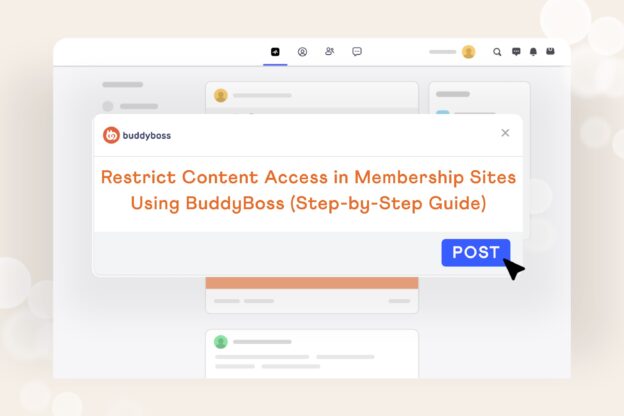Here’s the thing we’re not supposed to tell you: a lot of “gurus” out there want BIG bucks to sell you search engine optimization (SEO) secrets.
But there’s a lot of misinformation out there. Unscrupulous webpreneurs taking advantage of the murky details around SEO will take you for a ride if you don’t get to know a bit about these practices for yourself.
If you’re just starting out with your membership site, you may be wondering how you are going to drive traffic to your site.
Even if you’re well established, there may be plenty of tricks you can apply within your content and meta-content to increase the number of people seeing your products.
This is where Search Engine Optimization becomes essential to the success of any membership site.
What is SEO – and Why Should Membership Site Owners Care?

SEO is about maximising traffic to your site, by taking steps to improve the “ranking” or position in the list of search results in Google or other search engines.
You can improve your rank by including important keywords, giving your site a clear structure, and making your content stand out from the rest.
And why should membership site owners care? Because increased traffic equals more members.
Without members, you are talking to yourself – for free.
Why Do Membership Site Owners Struggle With SEO?
The key issue when implementing an SEO strategy is that there is a reason your site is special to its members – it’s exclusive, and locked down.
So, enticing potential members to your site using SEO isn’t helpful if they can’t access the material once they are there.
To make the most of your SEO strategy, release a portion of content as an excerpt or a snippet.
Make sure the quality is excellent, so that readers are desperate to sign up and read the rest.
Use your blog as your free content to promote your membership site and drive traffic using well-researched keywords.
Free content is the best way to encourage new members without the risk of frustration, and your blog can serve as a valuable “face” to your membership site.
What Does Google Actually Want? – Myths and Truths

Let’s get one thing straight – knowing exactly how Google builds their ranking factors can only ever be a case of “best guess.”
It’s a science, but not an exact one – if anyone ever promises you that they can sell you a service based on their intimate knowledge of Google’s algorithms, run away.
There is always doubt, change and uncertainty when it comes to search engine ranking factors.
You might even find argument with some of the points raised in this article!
One company called Moz is a solid, dependable source of deeply-analysed data based on surveys and studies.
Moz release a new study every two years to describe the closest estimate to Google’s ranking factors: what may help a website gain visibility in search engines.
Based on Moz’s study, there are a few “facts” (bearing in mind that this is survey data) that may help membership site owners – and a few myths that can be debunked:
- Keywords and links within your site pages are some of the highest-scoring elements in terms of influencing search engine ranking. Also important are meta data features (the title and description that appears on the search page) and quality of links to and from your page (no spamming).
- “Backlinks” are a really good way of boosting your site’s ranking. The more links to your site from trusted websites, the higher the rank.
- Click thru rate (CTR) from the search page is just as important as any other factor because it shows you are getting everything right in terms of SEO (keywords, content, meta data) – just make sure you focus on quality within your site, or people will immediately return to the search page. This is termed site “stickiness”: creating content for the user, not the search engine.
- Further down the list than you might expect is text length. Relevance of content and optimised keyword usage are more important than extra-long pages of text.
- Time spent on your site can only be seen from stats programs so it isn’t data that Google could easily access due to security. Focusing instead on engaging the user so that they don’t instantly click back to the search engine is what’s really important.
- Domain names aren’t really a factor anymore in finding a website. Feel free to call your membership site whatever you feel – just make sure your meta data jumps out at potential members.
Membership Site Structure and SEO

A continuous review of your membership site structure as the site grows is an essential part of good SEO practice.
Your site structure tells Google where to find your information, and guides the search engine towards content.
If your site structure is confused and complicated, URLs will be lost and you may even be in a position where one of your own pages is competing with another.
Site structure is important not only for SEO, but for user experience: make it easy for everyone and maintain order across your pages, content and blog posts!
Keyword Research – how to get it right

Take some time to find the keywords that best describe your business. Then choose a tool that will help you narrow down the most useful.
You can pay for access to a keyword tool like Keyword Tool Pro.
These types of tools are excellent and help you decide which keywords are most competitive (most searched – least used).
They also help you to track the effectiveness of your keyword strategy.
If you’re building your membership site, you might want to try the free way to get started: simply enter your keyword into Google, and then look at the suggestions list that appears.
These are long-tail keywords and you’ll need to ensure these appear prominently across the pages within your site, and in the meta data (title and description on the search page).
Then access a free tool to deep dive into the most competitive keywords.
On and Off-page SEO

On-page SEO is everything that you build in your membership site to influence search engine rankings: site structure, content and load speed.
This includes keywords used in blogs, video, web pages and meta descriptions.
Off-page SEO is all about what happens with your membership site externally.
This includes link building (building positive backlinks with reputable sites, getting featured in reviews, etc) as well as local SEO – in-person SEO with local businesses.
It is an integral part of your SEO strategy: creating exposure, building brand awareness and driving traffic to your membership site
Off-page SEO is particularly important in membership sites because parts of your site content are locked down.
Be very aware that you don’t want to frustrate people by linking to content they can’t access without becoming a member.
Making sure your brand is promoted off-page can be the deciding factor in traffic growth to your site.
As you craft your content, use a tool like AIOSEO’s TruSEO Score. It gives you real-time, actionable feedback to optimize your on-page SEO as you write.
SEO is Vital To Increasing Traffic To Your Membership Site

If you want to get noticed, your membership has to be optimised for search engines. You need to do your research – but you don’t need to feel overwhelmed.
A solid focus on keywords, quality content, backlinks with related sites, meta data and site structure will give you the power you need to increase your search engine ranking.
Focus on the real world too, making sure that local people know you are out there.
And don’t forget to deliver what your members want – not what you think Google wants.












